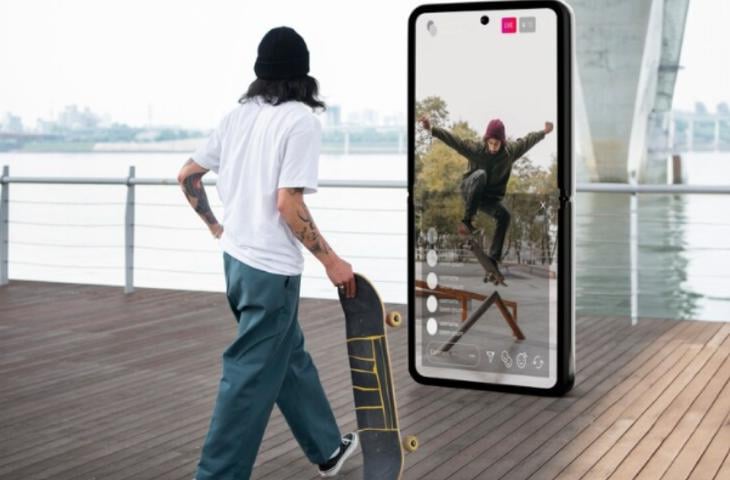
The Use of Augmented Reality and Virtual Reality in Digital Signage
Augmented reality (AR) or virtual reality (VR) are concepts that we’ve heard of for quite a while now. Imposing digital elements into the real world, it’s gained popularity in different industries, from gaming to warehousing.
To date, most AR and VR solutions we’ve seen come in mobile form. They’ve been integrated into smart devices where digital impositions are added to the physical environment shown on screen. One of the most popular examples of this, which we’re sure you’re familiar with, is the AR game Pokémon Go.
While AR and VR are still limited in application, there’s increasing use of it in the digital signage industry. Recognized as a technology that can enhance user interactivity and support digital signage features, AR can soon become a valuable addition to your digital signage campaigns.
The Current Augmented Reality Market
The terms AR and VR aren’t new, with news of these technologies breaking out in the 90s. Since then, innovators have been continuously exploring how to integrate them into the digital era in a practical and valuable way.
These efforts have born fruit, as the AR market is steadily rising from its humble beginnings to becoming a $152 billion industry by 2030. This is thanks to the big tech companies that are investing in AR technology, including Facebook and Apple.
While we’re still a long way from living in an augmented-reality universe, efforts are being made to develop, test, and implement the technology for mainstream use and application. Refinements in its hardware, platforms, and content are still needed to achieve usability and accessibility. The digital signage industry, however, is seeing AR’s potential benefits and impact.
Predictions on Augmented Reality and Virtual Reality Use for Digital Signage

Simply put, AR superimposes the digital world onto the real world. This basic nature gives it a lot to offer to digital signage.
The simplest way that AR can be integrated with digital signs is with the use of QR codes. Displayed on a digital screen, the user can scan the code with the mobile device and be directed to download an accompanying application.
The screen can then guide the user through exciting interactions on their mobile devices, from discounts and offers to links and other media types.
Another potential use of AR in digital signage is to enhance in-store shopping. There can be screens that function as a virtual mirror, for example, superimposing clothing and accessories that the customer can try on without having to go to the dressing room.
Typical things usually done physically, like trying on clothes, comparing sizes, etc. can be done on-screen, providing the customer with an efficient and more convenient shopping experience.
Ultimately, AR isn’t made to be a direct form of advertisement for digital signage. Instead, it works to enhance your campaigns, impress the customer, and improve their experience, which can lead to more value and revenue.
Impact of Augmented Reality and Virtual Reality on Digital Signage
Digital signage has three primary uses: to advertise, to attract, and to communicate. Any digital signage campaign will revolve around achieving at least one of these three core uses. In any case, AR provides a good opportunity to enhance the use of digital signs. It’s primarily beneficial in three settings:
Retail
AR technology can help you extend your interaction with your audience. Instead of the traditional route where you run ads of your product on-screen with a CTA that leads to your website, you can facilitate a more interactive journey for your customer.
When you integrate AR and VR technology into your digital sign, the screen can detect if the user already has a supporting application to view the AR. When it does, it prompts a notification to be sent to their mobile device, telling the user that there’s a nearby screen to interact with.
They can then point their phone at the digital signage and be presented with a series of activities, whether that’s being sent to your website, playing a promotional video on the digital screen, viewing products or services, signing up for your newsletter, or making a purchase.
While that happens, the digital signage also collects data on the user’s journey and behaviors. This, you can use to inform you of how your digital signage is performing and shape decisions about how to improve your campaign strategy.
Corporate
 AR can also be of benefit in digital signage screens used for corporate communications.
AR can also be of benefit in digital signage screens used for corporate communications.
Lobby digital signage that broadcasts company information, for example, can incorporate AR technology to allow the viewer to learn more about your business by triggering a slew of activities — whether watching your branded videos, visiting your website, or checking out your social media pages.
Employee-facing digital signs, on the other hand, can boost employee engagement by integrating AR to facilitate information sharing. They can hold their phones up to the screen to sign up for a company event, add meetings to their corporate calendar, and more.
Education
AR and VR also find applications in digital signage installed in educational settings, enhancing the way the screens broadcast information to teachers, students, and visitors. For one, AR can turn a digital screen into a virtual tour guide to help with wayfinding.
Another is helping the user access and navigate information, whether about the campus, the facilities, the alumni, staff, etc. All this information is better communicated through AR interaction. Classroom digital signage can also leverage AR to advertise lectures and forums, new courses, school events, etc.
In any setting, integrating AR with digital signage offers one key benefit: more interaction. It allows them to view information at their own pace and control their journeys when interacting with your business.
AR/VR Wayfinding with Digital Signage
While there are plenty of possibilities involved in using AR with digital signage, perhaps the most practical and easiest to implement is its use as a wayfinding solution. AR essentially reacts to imagery in the physical environment and creates a digital guide. This makes it highly useful when navigating unfamiliar environments.
The AR wayfinding journey begins when a person finds a wayfinding digital sign. This screen will provide them with a floor map of the establishment and initial directions to their destination. So they can be guided as they work their way around the building, AR steps in.
After pointing their mobile phones at the screen, they can get turn-by-turn directions on their device, superimposing directions on the camera’s view. As the user moves, the directions change, and so does the information on the screen regarding their proximity and whereabouts.
AR, when used with wayfinding digital signage, can make it incredibly easy for guests to navigate an unfamiliar area safely and with confidence. It eliminates the need for multiple wayfinding screens around the facility and instead puts navigation at the user’s fingertips.
Here are the benefits of using AR or VR to enhance wayfinding digital signage:
Real-Time Responsiveness
AR wayfinding responds to the user’s movement throughout the facility. As they move, the information in the AR overlay also changes, providing them with updated information about their routes, proximity to their destination, and any guidelines or rules applicable to their current locations.
This can be particularly helpful in communicating policies or health and safety guidelines. The AR can initiate pop-ups that inform the user of anything they might need to know as they move through the space.
Accessibility
AR is not just a visual communications technology. It can also provide auditory feedback like voice control and audible responses that help guide users with disabilities. The AR technology can cater to these users by detecting any personalized accessibility settings in their mobile devices and adjusting how information is communicated accordingly.
AR for wayfinding can be programmed to meet ADA requirements with its dual modality, providing both visual and auditory wayfinding solutions.
Superior Design
AR or VR has a reputation for being cluttered, distracting, and disorienting. However, that’s not always the case. When used for practical purposes, AR can have a clean and minimalist design that provides a balance between aesthetic requirements and clearly delivering wayfinding information.
Integrating AR and VR with Digital Signage
AR and VR tools and platforms are readily available to integrate with your digital signage solutions. Whether used to improve customer experiences in-store or assist in wayfinding, it’s become easier now more than ever to implement AR-powered digital signage.
If you’re ready to unlock the benefits of AR for your digital signage network, book a free demo with Rise Vision to learn how our software can support your needs.
More From Our Blog
-

Screen Sharing for Workplace Collaboration | Rise Vision
Screen-sharing technology has transformed how teams communicate and work together in real-time, regardless of their location. It can make presentations more engaging, support remote work, and speed[…]
Read More -

How to Use PowerPoint for Digital Signage
To create stunning, attention-grabbing, and effective digital signage content, you need the help of content creation and presentation tools. One of the most popular is Microsoft PowerPoint, owing to[…]
Read More -

120 Digital Signage Content Ideas
So…. you decided you would invest in some digital signage software and you need some ideas for ways you can make it stand out. This article is your go-to source for the best digital signage content[…]
Read More
Keep Your Displays Interesting – Pick New Templates Every Week!
Every week, we send template recommendations that will make you look great and improve your audience experience. And the best part, they save up to 16 hours of content creation time every week!
12,300+ Organizations Trust Rise Vision, You Can Too
Schedule a Free Demo
You deserve the #1 all-in-one platform for digital signage, screen sharing, and emergency alerts.



































